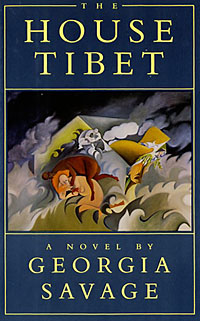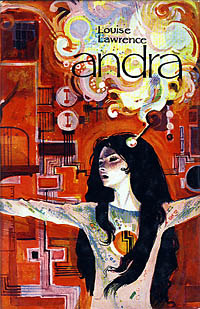 This is one of the novels I’d take with me to a desert island. It’s also a worthy addition to my “Attack of the Zombie Girls” thread, featuring as it does a girl who is not passive, though she is, at the beginning of the book, a victim. I dislike the cover of the Graywolf Press edition, much as I appreciate their publishing the book. Those distorted, blobby figures in vaguely erotic grapplings have little to do with the story. I looked for the original cover, a red, green and white twining of vines and blossoms, but could not turn it up, since publication predated the pictoral web by several years.
This is one of the novels I’d take with me to a desert island. It’s also a worthy addition to my “Attack of the Zombie Girls” thread, featuring as it does a girl who is not passive, though she is, at the beginning of the book, a victim. I dislike the cover of the Graywolf Press edition, much as I appreciate their publishing the book. Those distorted, blobby figures in vaguely erotic grapplings have little to do with the story. I looked for the original cover, a red, green and white twining of vines and blossoms, but could not turn it up, since publication predated the pictoral web by several years.
The setting is Australia, and the novel starts, jarringly, with the rape of thirteen-year-old Victoria by her father. Unable to get the women of her family to listen to her, she runs away, renames herself Morgan Le Fay Christie, and lives on the beach/streets, in squats on land and at sea, in a brothel (as a laundress), and finally in a rented room left her by a friend. Along the way she finds friends and protectors amongst a group of homeless kids, the laundrymistress and madam of the brothel, and most importantly Xam, an eighty-year-old English lawyer living in the boarding house Tibet. Her fellow travellers are her brilliant, silent eight-year old brother, James, renamed Max, and in time, his cat, Bobby Deerfield. At Tibet, encouraged by Xam, she starts to write down her story, which is the novel.
A few days ago, it occurred to me how much the themes of silencing and story weave through this novel. In the first few chapters, Victoria is repeatedly silenced, by her own inability to describe what has happened to her, by her mother’s first reflex rejection, by her grandmother’s prim denial, and by her aunt’s appropriation of Victoria’s story for her own psychodrama. Angel, Allie, and Marcelle, the street/beach kids who do hear her, are all silenced in turn: Angel by the drug addition that takes her away into new and chancy company, and Allie by the corrupt hospital administration that claims she signed her newborn baby over for adoption. Marcelle’s silencing is the cruellest of all: she drowns, and the
drowning is covered up by the man she was sailing with. The teenagers are not alone in being silenced. The father of the young Asian runaway, Josh, has been sent to prison on false charges when he refused to pay protection money. Victoria’s mother, a potter, has endured a creative silencing in her marriage to a man who denigrates her work. And then there is Max, who has been rendered literally mute by the tensions in his home.
But the characters still tell their stories, creatively and literally. To amuse themselves on the dark beach at night, the young runaways elaborate a “screenplay” featuring an heroic female Resistance fighter. Allie finds a place with a theatre troupe who perform a feminist version of the creation myth (in mime) entitled “Careful what you call your daughters”, warning against female submissiveness. Victoria’s mother begins creative work again, inspired by the theme of a mother’s search for her lost child.
Max discovers language, his first word a warning to his sister to flee as they are discovered in one of their squats. Faced with the threat of returning to the home that oppressed him, he so convincingly enacts his distress that their mother relents. Allie tells the story of her kidnapped baby to her daring theatre troupe friends, who take action, and to Xam, who ensures her the protection of the law, and thereby regains her son. Although there may never be a legal case made against Marcelle’s boyfriend, between Xam and the youth worker who eventually gains Morgan’s confidence, he will not escape the damage to his reputation. And Victoria’s story is finally told, to her street friends, to Xam, to Ingrid Frew, and to the reader. It’s a splendid book, told in a distinctive, colloquial young voice.
 This is a post I have been meaning to write for a while, ever since this book arrived on my front doorstep, courtesy of
This is a post I have been meaning to write for a while, ever since this book arrived on my front doorstep, courtesy of